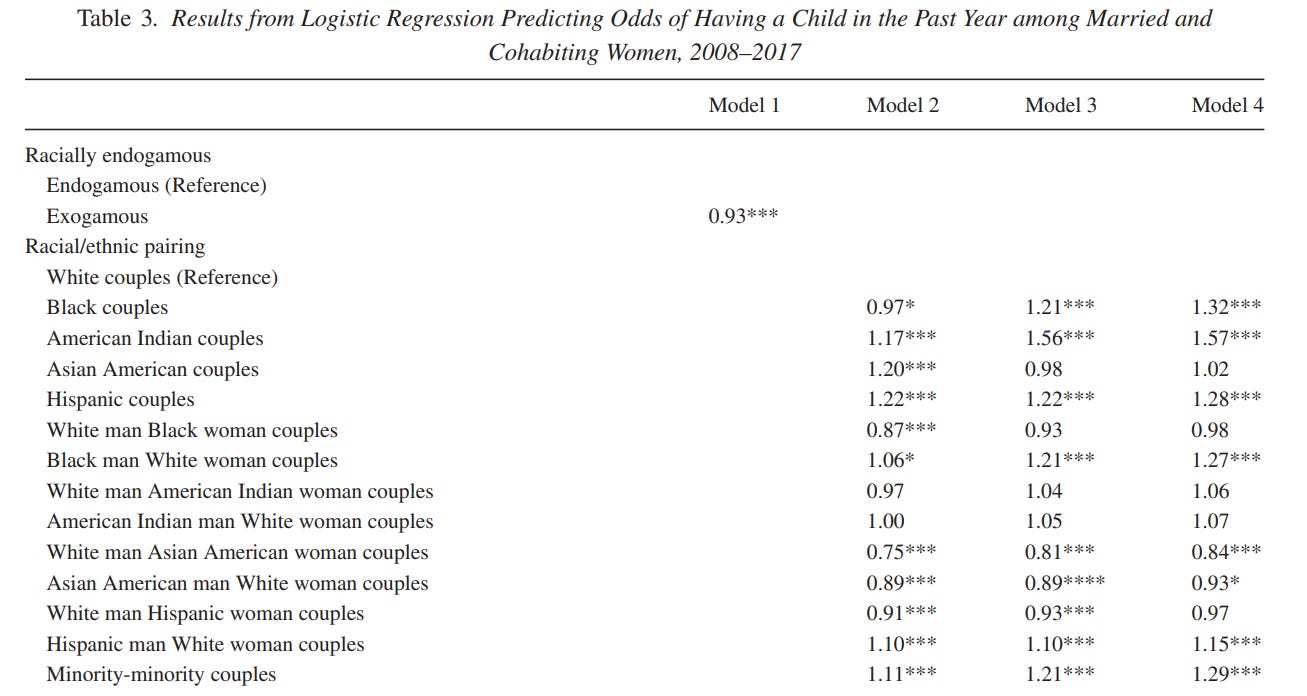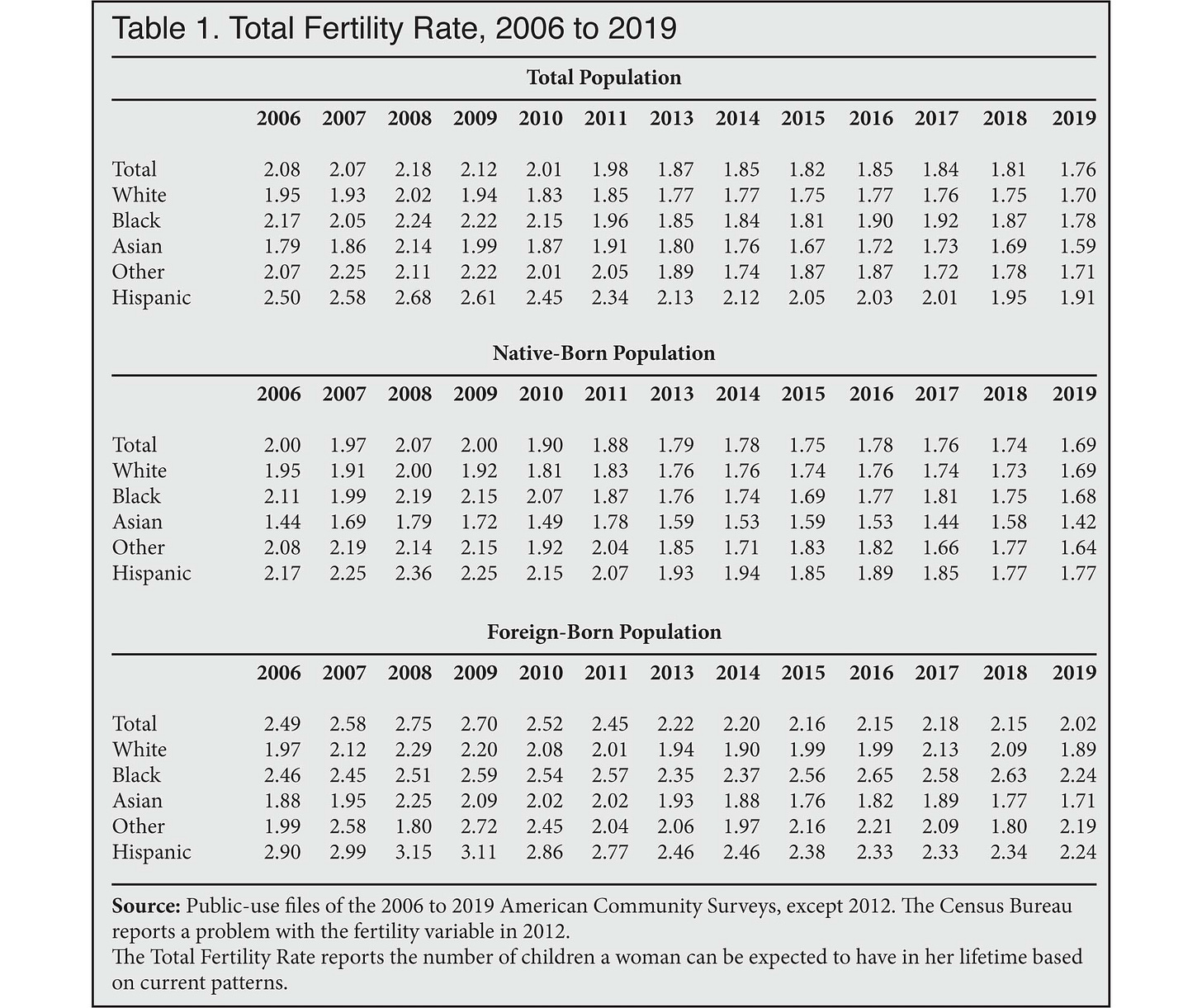In the past, the heritability of fertility was fairly low due to the lack of contraception and higher levels of child mortality. As countries have become industrialized, the correlation between parents and children in fertility has increased due to fertility being partly self-selected.

Given that adoptive siblings correlate at 0.105 in fertility, and that biological/DZ siblings correlate at .20-.24, the true heritability of fertility is between 19% and 27%.
One could argue that, as variance in fertility between individuals is largely environmental, that this should be expected to be the case for races too. This is sophistry; consider that the heritability of intelligence is about 50-75%, and that the heritability of income is about 30-50%, but that intelligence explains the entire difference in income between Blacks and Whites. The Jensen variance argument would estimate the heritability of the B-W income gap to be 30-50%, but when one introduces the context that the income difference is explained by intelligence, the estimate then jumps to 50-75%. Estimates of between group heritability must be informed by much more than just the heritability between individuals.
There are two ways race differences in fertility can be genetic: extended phenotypes, where genetic differences between groups cause them to have macro-level structural and cultural differences; and differences in individual phenotypes, where the genetic differences between groups cause them to act in a different way on an individual level.
On the extended-phenotypic level, the elephant in the room regarding race differences in fertility is intelligence. Intelligent nations tend to develop modern economies where citizens tend to plan their fertility with birth control and education. At the moment, the average IQ of a country and its TFR correlates at -.74:
Low IQ countries can also adopt the low fertility extended phenotype, as can be seen by the fertility of Puerto Rico, Moldova, and some small African islands, but they are less likely to do so. Every nation with an IQ above 90 except for Israel and Mongolia has adopted the low fertility extended phenotype.
On the individual level, intelligence and social class typically have a small, negative correlation with fertility, though this varies substantially by region and country. This is less true for recent cohorts, and in some countries the relationship has flipped in the opposite direction.
In terms of personality, within both sexes, extraverted and close minded people had more children. Conscientious women tend to have less children, though this is not true for men.

Roughly the same results replicated within Norway, though neurotic Norweigans tended to have slightly less children than their emotionally stable counterparts.
Accordingly, East Asians, who are intelligent, conscientious and introverted, typically have fewer children than Blacks or Whites when they occupy the same countries.
The median East Asian country has a fertility of 0.99, while the median fertility of East Asians abroad is 1.23, only 0.2 higher.
This analysis is biased by the fact that emigrants are not representative of their national countries and by the fact immigrants frequently breed with natives. In practice, the fertility rates of interracial couples do not support the hereditarian hypothesis, though I suspect this is due to self-selection and not the absence of genetic differences between races in predisposition to fertility. Oddly enough, White women who date outside their race are more likely to have a child in comparison to White men.

Besides the fact that East Asians have unusually low levels of fertility, Central Asians have unusually high levels of fertility within their host countries:
The cause of this is not some kind of environmental contaminant or state policy; the fertility of the ethnic Russians within these countries is only about 0.2 points higher than it was in Russia in the same time period. It wouldn’t be unreasonable to suggest that this might have to do with genetics.

Besides the outliers in Asia, race differences in fertility independent of the extended phenotype effect are small and inconsistent in direction. Hispanics and Arabs typically have had high fertility rates, but their ferility has been decreasing as of late. Empirically, the fertility of non-western immigrants typically reverts back to the native mean within one generation. This was the case in Denmark, and to a lesser extent, the United States:

Norway has good data on fertility by country of origin. For the first generation of immigrants, their fertility is largely reflective of the rates of their original country, while the second generation heavily regresses towards the mean in most cases, though this is less true for larger groups.
A similar study was conducted for second-generation women sampled in the 1970 US Census, where the country of origin of their fathers was used as a proxy for their ancestry, and it was tested whether a father’s country of origin predicted the fertility of their daughters in the United States. There was an effect, though it was small: an increase of one unit in TFR predicted an increase of 0.2 children within the daughters.

This was the rank order by country:
Hajnals, Chinese, Mexicans Filipinas, and the French/Irish were at the top; Swedes, Finns, and Southern Europeans were at the bottom.
Because of the bias that arises from extended phenotypes and the interaction between the genes and the environment, it is difficult to rank races in terms of their genetic predisposition to fertility. In the future, I predict race differences fertility to be largely a function of three variables: extraversion, mental stability (not necessarily low neuroticism, more like inverse p-factor), and attractiveness. Conscientiousness and intelligence might go from negative predictors to neutral or even positive predictors of fertility as childbearing becomes more reflective of intentional rather than impulsive behaviour.
Without going through the unpleasant effort of ranking races in terms of extraversion, mental stability, and attractiveness, I would rank the genetic predisposition of races/ethnicities in the current environment to be:
French
Hajnal Europeans (English, Dutch, Germans, etc)
Oceanic people, Central Asians, and Indonesians (not sure where to rank these)
Slavs, Southern Europeans, Ashk Jews, Mestizos, Mulattos, MENAs and Finns/Estonians
Most mixed-race people
Sub-Saharan Africans and Subcontinentals (Asian Indians, Bengalis, Pakistanis)
South Eastern Asians
North Eastern Asians
I ranked Hajnal’s genetic fertility above what would be expected from the three main phenotypes due to the fact that the current international mating environment most resembles that of Hajnal Europe, which likely enables their (unusually high) ferility. The French benefit from the hajnal phenotype as well as the breeder selection effect, where populations that go through demographic transitions earlier should, over time, become more genetically predisposed to having children. East Asians and Subcontinentals operated in an environment where most marriages were arranged, as such their personalities are not as well-adapted to a competitive and open mating market. Sub-Saharan Africans, despite being extraverted, do not seem to be that interested in intentionally having children; for this reason I predict them to have unexpectedly low levels of fertility in the future. Mixed race people will have unusually low levels of fertility due to two reasons: people generally have a same-race preference for mates, and that interracial daters are probably selected for phenotypes that are negatively causal for fertility.











Perhaps the reason Turks are so fertile is because their testicles had to become more robust and potent to handle a life of being jostled on horseback. Herodotus says that the Scythians sometimes suffered infertility because they wore pants too often and were always riding around on horseback.
Ashkenazi Jews had explosive birth rates for much of their history and still in religious circles retain high birth rates, so I'm a little surprised you rank them lower than Central Asians.